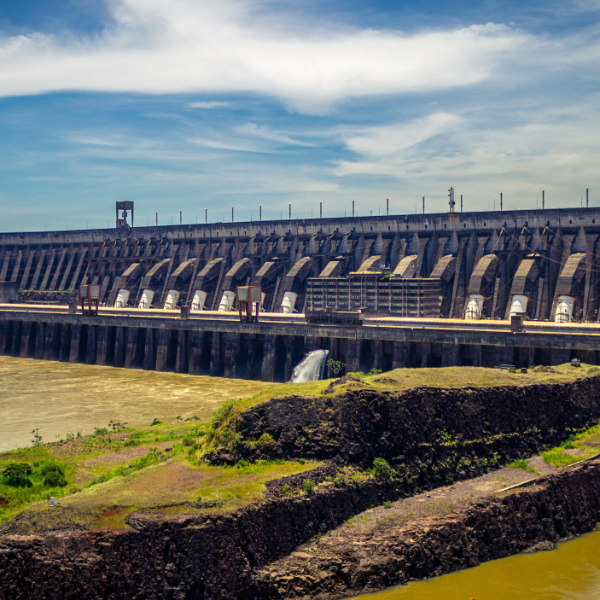Feasibility study into bypass for shipping traffic at Itaipu Dam

Feasibility study into bypass for shipping traffic at Itaipu Dam
A bypass channel for shipping traffic passing the Itaipu Dam – one of the world’s largest hydroelectric dams, located on the border between Brazil and Paraguay – may offer great potential for economic development and sustainable logistics in five Latin-American countries. Management company Itaipu Binacional has therefore commissioned international engineering and consultancy firm Witteveen+Bos to conduct a feasibility study for a bypass channel that will use locks to facilitate shipping traffic on the upper course of the Paraná River. The results of the study are expected to become available late July 2018.
The Itaipu Dam powers the world’s largest hydroelectric plant, which has an unparalleled capacity for the generation of renewable energy. The dam has been selected as one of the seven ‘Modern Wonders of the World’ by the American Society of Civil Engineers. The dam is 7.7 kilometres long and its hydroelectric turbines generated 103 MWh of renewable energy in 2016, sufficient to meet 75 % of the national energy demand of Paraguay and 17 % of the total energy needs of Brazil. To accommodate an increase in traffic over the past ten years, Itaipu Binacional decided to conduct a feasibility study into a bypass channel for shipping traffic near the Itaipu Dam. For this purpose, Witteveen+Bos is investigating the technical, economic, ecological and social feasibility of this bypass in the Paraná River. The study focuses on bridging a height difference of 125 metres using three or four locks, and comprises a technical design, an analysis of the environmental and social impact, and an economic cost-benefit analysis.
Economic growth and sustainable logistics
Economic growth in the region will create a strong increase in the demand for transport. One of the main benefits of waterways as a transport modality is that they enable a more sustainable form of transport. By way of comparison: a convoy of twenty inland vessels can transport a cargo of thirty thousand tonnes while consuming 5 litres of fuel per tonne per kilometre. Transporting the same cargo by road would require 1200 trucks consuming 218 litres of fuel per tonne per kilometre. In addition, the Paraguay-Paraná Waterway offers major development opportunities for five Latin-American countries: Paraguay, Brazil, Uruguay, Argentina and Bolivia. Witteveen+Bos is investigating whether relatively minor investments will be sufficient to create worldwide competitive advantages for these countries.
Complex issues
Witteveen+Bos project manager Paul Ravenstijn: ‘We want to combine sustainable water management and energy generation with sustainable transport and economic development. Rivers constitute vulnerable ecosystems, but they can also provide key solutions for climate-related and environmental problems connected to energy production, food security and mobility. This makes the feasibility study a complex undertaking that requires specialised expertise. We are therefore investigating nautical feasibility using fast-time simulations in collaboration with MARIN, the world’s largest independent knowledge institute for the maritime sector. We have also joined forces with STC-Nestra/Gistran to produce transport forecasts.’ The study also covers factors that determine the project’s social impact, such as stakeholder interests and environmental aspects. After all, any technical design that is not accepted by society cannot be realised. The feasibility study is being performed using an innovative integrated design method developed by Witteveen+Bos, with the company’s seven sustainable design principles being applied wherever possible. Both Witteveen+Bos and the client also support the seventeen UN Sustainable Development Goals, expressing their commitment to ending hunger and poverty, protecting human rights, and promoting gender equality.
Video
For more information about Witteveen+Bos’ seven sustainable design principles